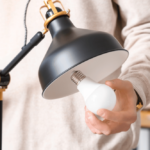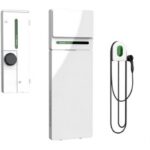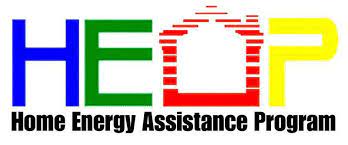How Solar Can Help In-Home Medical Equipment Energy Costs – EcoWatch
Energy Disrupter
As we enter the second year of the COVID-19 pandemic, only one thing is certain — we won’t be returning to the same routines and lifestyles as before. Over the past two years, we’ve undergone drastic changes in the way we live, the way we connect and the way we work.
Remote work increases flexibility, work-life balance and even saves companies money. According to Global Workplace Analytics, 60% of employers identify cost savings as a benefit to telecommuting. But the burden of a shifting energy economy is not felt the same by everyone.
For those now at home with medical needs or chronic conditions, this growing shift forces them to shoulder the electricity costs previously covered by insurers, hospitals and other public providers — a hefty price tag to those already struggling to navigate an overwhelmed healthcare system in the U.S.
What’s more, as increasing bouts of extreme weather threaten a fragile energy infrastructure, the risk of prolonged power outages adds another dire level of vulnerability to those who need uninterrupted power for life-supporting medical devices. During my time in New Orleans when Hurricane Ida knocked out power for a week or more, electricity outages coupled with heat waves threatened or cost the lives of everyday people living with pre-existing health conditions or age-related medical issues.
A conclusion many are left with is that human lives should not be reliant on the performance of public utilities.
To address these issues, we’re left with two questions:
- How can we make the energy economy more equitable for those struggling with increased energy burdens due to medical needs?
- How can we deliver uninterrupted, reliable power to those who require it as a lifeline?
Now more than ever, clean energy plays a large role in creating stronger, more resilient and independent communities. As we’ll outline, solar and storage solutions offer a means to securing reliable, affordable and equitable energy. Let’s take a closer look at clean energy and its role in healthcare.

Medical Devices and Energy Costs
Clean Energy Group reports that over 2.5 million Medicare beneficiaries have been identified as electricity dependent due to their reliance on home health care equipment, like oxygen concentrators or ventilators. To paint a more full picture, let’s dive into these common at-home medical devices and the energy needs associated with those products.
- Oxygen concentrators: These medical devices deliver extra oxygen to their users. A doctor may prescribe one to those with health conditions that threaten oxygen levels to drop to dangerous levels.
- Ventilators: This medical device pumps oxygen mechanically into the body through tubes in the windpipe when patients are unable to breathe on their own.
- Home hemodialysis: These devices treat kidney failure by using an artificial filter called a dialyzer.
- Motorized scooters or wheelchairs: These are used to help the elderly or disabled regain mobility. These days, scooters are charged at home.
- Climate control/HVAC: During extreme heat, keeping your climate control system powered can be the difference between life and death.
Though most of these devices aren’t in the common vernacular of most of our readers, there are millions of Americans that rely on them.
So let’s talk about energy. How much would each of the following devices cost the average homeowner to power for one year?
| Medical Device | Power (Average) | Estimated Cost Per Year* |
| Oxygen Concentrators | 250-500 watts | $275-$575 |
| Ventilators | 75-150 watts | $80-$175 |
| Home Hemodialysis | 120 watts | $150 |
| Motorized Scooter | 90 watts | $35 |
| HVAC | Varies | $250 |
Remember that though insurance may cover the costs of the devices themselves, most plans fail to cover the costs of powering them.
Are There Current Programs to Offset Medical Electricity Costs?
Can public electricity companies help? A lack of standardization across utilities causes a huge challenge to effectively helping at-risk customers pay their energy bills. The National Consumer Law Center explains that “state utility commissions set the rules regarding when and how the companies they regulate can terminate vital electric and gas service for non-payment. For households with a seriously ill person, strong rules can mean the difference between life and death.”
In other words, most utilities get to decide for themselves whether to assist their customers with higher energy needs due to medical equipment. One such program is Pacific Gas & Electric’s (PG&E) Medical Baseline Program through which enrolled residential customers receive an additional allotment of energy every month at the lowest price available on their rate. This is called the Baseline Allowance.
Programs like this take a step toward addressing our first question above concerning energy equity, but until these processes are standardized across state lines, millions of customers will still face an outsized energy burden. Also, PG&E’s Baseline Program helps level out energy costs, but it does not assist with emergency preparedness in case of a prolonged outage (of which PG&E has a history).
So what’s the next step in providing reliable, uninterrupted power to those who depend on it? What does solar have to do with all of this?
Offsetting Medical Risks with Solar and Storage
It’s common knowledge at this point that solar can offset high energy bills with reliable, clean power, but solar energy also serves as a keystone of energy independence. If prolonged power outages have taught us anything, it’s how reliant Americans are on public utilities to deliver the power they need. When these utilities fail, lives and economies are put at risk.
Solar and storage, another way to describe solar panels paired with a backup battery (such as the Tesla Powerwall or Enphase Encharge), can generate home electricity and store it for use when the sun is down, during rainy weather or during grid outages. Currently, most at-home medical energy equipment is still powered by diesel generators during outages, which carry their own health risks from the fumes they emit.
Solar and storage solutions offer cost-effective, clean solutions to reliably generate and distribute electricity during a grid outage. While most of the best solar batteries can’t yet support the electricity use of an entire home, most can be customized to support essential appliances when grid outages do occur. This technology carries the potential to completely upend the home energy market and can offer lifesaving support for those who need it.
Are There Current Programs to Offset the Costs of Solar & Storage?
We know that not all of our readers will be able to pay the large upfront cost of solar, but luckily, some governments are starting to take notice of the enormous role clean energy and storage are projected to play in the new energy economy. The federal solar tax credit offers assistance in the form of a 26% tax credit, but it only covers storage if installed within a year of putting up your solar panels.
Some are pushing for the expansion of the tax credit to include energy storage technology. As proposed in the Build Back Better Act, “[Energy storage] technologies would be eligible for a 6% base credit rate or a 30% bonus credit rate through the end of 2026.”
In preparation for the next wildfire season, the California Public Utilities Commission has authorized funding of more than $1 billion through 2024 for the Self-Generation Incentive Program. This funding includes prioritization of communities living in high fire-threat areas and communities that have experienced two or more utility Public Safety Power Shutoff (PSPS) events, as well as low-income and medically vulnerable customers.
Maryland, Massachusetts and New York also offer statewide incentives for energy storage systems as part of their push for a more decentralized, equitable and reliable energy economy.
Why Backup Power Is Important
Providing emergency support for the medically vulnerable reflects just one of the many benefits of coupling solar with storage. Mainly, solar and battery backup make the grid more resilient. Here’s why that’s important, according to The White House:
“The U.S. energy sector in general, and the grid in particular, is vulnerable to the increasingly severe weather expected as the climate changes… Energy storage can help level loads and improve system stability. Electricity storage devices can reduce the amount of generating capacity required to supply customers at times of high energy demand – known as peak load periods.”
In addition to generating your own backup power, this means that each house that adopts solar panels and batteries eases the burden placed on public infrastructure through a changing climate. This, in turn, lowers the frequency of outages and the high costs associated with repairing and upgrading an outdated grid.
To learn more about the technology and benefits of energy storage, visit our page on the best solar batteries.
Karsten Neumeister is a writer and solar energy specialist with a background in writing and the humanities. Before joining EcoWatch, Karsten worked in the energy sector of New Orleans, focusing on renewable energy policy and technology. A lover of music and the outdoors, Karsten might be found rock climbing, canoeing or writing songs when away from the workplace.
Original Source: https://www.ecowatch.com/solar-home-medical-costs.html
















